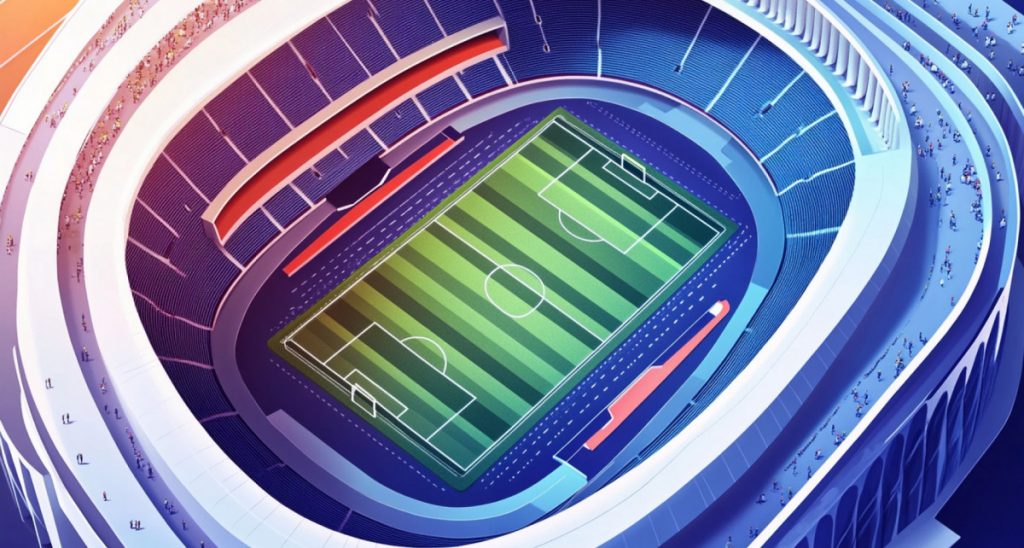The Most Iconic Football Stadiums in the World and Their Histories

In Brief
Football stadiums are not just architectural landmarks but culturally significant arenas that reflect historical, economic, and technological developments, hosting iconic events and evolving into modern hubs of global sports, media, and community engagement.

Football stadiums represent more than concrete structures because they contain multiple distinctive events. The facilities demonstrate historical developments between international sporting events and cultural preservation. Popular stadiums across the world have hosted both World Cup finals as well as UEFA Champions League finals and intense local derby matches. The architectural design demonstrates the economic and architectural patterns that characterized the specific time of construction.
A Brief History of Legendary Arenas
Beyond their sporting significance, some stadiums influence digital engagement patterns on platforms such as online casino portals, where match statistics and venue performance are often factored into betting models. Crowd density, pitch conditions, and home advantage play a role in tactical forecasts, particularly in high-stakes fixtures.
Transformations of stadiums led to the development of advanced indoor structures which incorporate movable roofs alongside compound turf systems as well as control areas with multimedia capabilities. The historical San Sirotogether with Maracanã operate today after exceeding 70 years of existence.
Stadiums such as ‘the new Wembley’ in London showcase modern constructions on historic grounds. These facilities function as cultural platforms which invite worldwide television broadcasts as they guide the approaches of football teams and organizing bodies toward enthusiasm networks.
Key Facts: Iconic Football Stadiums
| Stadium | Country | Opened | Capacity | Notable Events |
| Camp Nou | Spain | 1957 | 99,354 | 1982 World Cup, UEFA Champions League finals |
| Wembley Stadium | England | 2007 (new) | 90,000 | 1966 World Cup final, Euro 2020 final |
| Maracanã | Brazil | 1950 | 78,838 | 1950 World Cup final, 2014 World Cup matches |
| San Siro | Italy | 1926 | 80,018 | UEFA Champions League finals, Milan derbies |
| Signal Iduna Park | Germany | 1974 | 81,365 | 2010 World Cup matches, Bundesliga atmosphere |
Camp Nou (Barcelona, Spain)
Camp Nou, opened in 1957, is Europe’s largest stadium by capacity. It has served as FC Barcelona’s home ground and a symbol of Catalan identity. It hosted matches in the 1982 World Cup and the 1999 UEFA Champions League final. Plans for renovation include reducing capacity slightly but adding climate control and hybrid pitch systems. As analytics-driven fandom increases, especially through communities like Melbet Facebook, stadium-specific metrics are now regularly included in performance assessments.
Camp Nou serves as a platform for both football matches and political demonstrations and community gatherings throughout history beyond sporting events. Studies rate its acoustics as one of the finest systems for spreading fan cheers over long distances.
Wembley Stadium (London, England)
Wembley Stadium received a modern rebuild as a new facility in 2007 to supplant the old stadium which organized the 1966 World Cup final. Designer elements of the building incorporate the distinctive arch as both functional support and prominent visible shape throughout London. Because it can accommodate up to 90,000 attendees it stands as the biggest stadium throughout the United Kingdom.
Wembley hosts domestic cup finals, England’s home matches, and major concerts. Multiples matches happened at this stadium during Euro 2020 before it hosted the final match between England and Italy. A repeated renovation process on the stadium turf occurred because of frequent events along with pitch deterioration.
Maracanã (Rio de Janeiro, Brazil)
Officially named Estádio Jornalista Mário Filho, the Maracanã opened in 1950 for the World Cup. The stadium witnessed Brazil’s unexpected loss to Uruguay in the tournament’s final match, a result known as the “Maracanazo.” At the time, it held nearly 200,000 spectators, though its capacity was later reduced due to safety regulations.
The stadium was renovated for the 2014 FIFA World Cup and 2016 Summer Olympics. It hosted both the opening and closing ceremonies of the Olympics and remains Brazil’s most famous football venue.
San Siro (Milan, Italy)
Established as the soccer stadium for both AC Milan and Inter Milan teams San Siro exists as one of Europe’s rare venues utilizing the facilities of rival clubs. The stadium exhibits mid-20th-century architectural features through its stacked seating design combined with its curved roof structure. The stadium conducts numerous UEFA Champions League finals and various Milan conservative competitions that are renowned for their dynamic and electric atmosphere.
The stadium continues regular operations with plans submitted for a new stadium nearby despite its usage confirmed through at least 2026 for hosting the Winter Olympics together with Milan.
Signal Iduna Park (Dortmund, Germany)
Also known as Westfalenstadion, Signal Iduna Park is renowned for its atmosphere, especially the Südtribüne or “Yellow Wall”—a standing terrace that holds nearly 25,000 fans. The stadium opened its doors in 1974 and has received ongoing upgrades which brought LED lighting as well as digital signages and acoustic improvements.
The stadium functioned as one of the 2006 FIFA World Cup venues while Borussia Dortmund maintains its home base in this facility. On average the stadium stands among the premier venues regarding attendance figures throughout Europe.
Notable Stadium Features in Modern Design
Modern stadiums are built with both aesthetics and performance in mind. The main stadium features that affect both functionality and fan experience include:
- Hybrid pitch systems for durability and consistency
- Acoustic roof structures to amplify crowd sound
- LED-integrated seating for dynamic light shows
- Retractable roofing systems for weather adaptation
- Biometric access controls for fan safety and flow
These innovations change the quality of the match and affect tactical analytics, data gathering, sponsorship activation, and fan engagement monitoring.
Historical Matches That Defined Venues
The reputation of stadiums aspires to rise because of critical football matches that redefine sporting periods. Examples include:
Maracanã (1950)
- Uruguay defeats Brazil in front of 173,000 spectators
Wembley (1966)
- England wins its only World Cup title
- Camp Nou (1999) – Manchester United’s comeback win in the UCL final
- San Siro (2003) – All-Italian UCL final between Milan and Juventus
- Signal Iduna Park (2013) – Dortmund vs. Málaga Champions League quarter-final
Each of these matches contributed to the stadium’s legacy through drama, controversy, or significance in competition history.
Disclaimer
In line with the Trust Project guidelines, please note that the information provided on this page is not intended to be and should not be interpreted as legal, tax, investment, financial, or any other form of advice. It is important to only invest what you can afford to lose and to seek independent financial advice if you have any doubts. For further information, we suggest referring to the terms and conditions as well as the help and support pages provided by the issuer or advertiser. MetaversePost is committed to accurate, unbiased reporting, but market conditions are subject to change without notice.
About The Author
Gregory, a digital nomad hailing from Poland, is not only a financial analyst but also a valuable contributor to various online magazines. With a wealth of experience in the financial industry, his insights and expertise have earned him recognition in numerous publications. Utilising his spare time effectively, Gregory is currently dedicated to writing a book about cryptocurrency and blockchain.
More articles

Gregory, a digital nomad hailing from Poland, is not only a financial analyst but also a valuable contributor to various online magazines. With a wealth of experience in the financial industry, his insights and expertise have earned him recognition in numerous publications. Utilising his spare time effectively, Gregory is currently dedicated to writing a book about cryptocurrency and blockchain.

















































